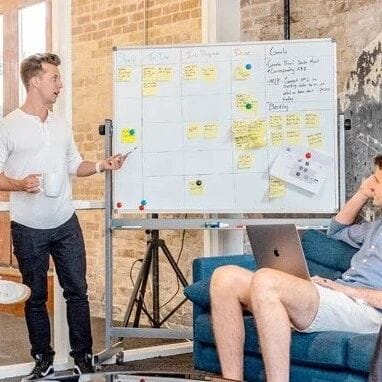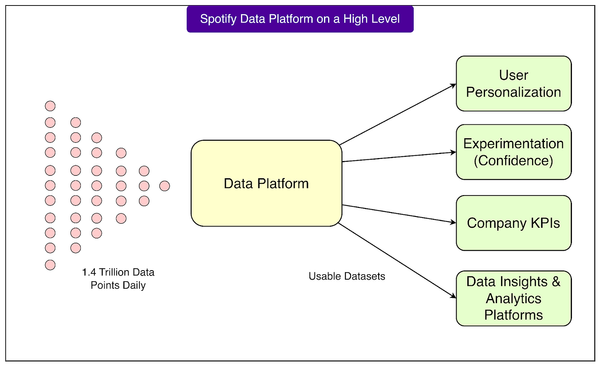Three Key Challenges in Building Outstanding Software Architecture
Key Takeaways
- The most expensive mistake — and the first question to address — is building a product that is not worth building.
- If the product is worth building, the next most costly risk is creating something that cannot perform adequately or scale to fulfill its business case.
- Once those two questions are answered, the next priority is lifetime cost — making choices that ensure the system is maintainable and supportable over time.
- Revisit earlier decisions when new information emerges, especially if a key assumption is broken.
- Experimentation won’t guarantee the right choice but can quickly identify wrong decisions.
---
The Challenge in Software Development
In any software project, there’s always far more work than time or resources.
The list of possible features is infinite, but the constraints are very real.
Architecture is particularly vulnerable to this issue. The craft lies in deciding what must be decided now vs. what can wait.
Good architectural choices require:
- Answering foundational questions in the right order
- Rejecting false assumptions early and cheaply
- Relying on empirical evidence
- Identifying wrong and costly alternatives fast
---
Minimum Viable Product (MVP) and Minimum Viable Architecture (MVA)
The MVP and its architectural counterpart, MVA, are useful frameworks for approaching these trade-offs.
Read more: The Minimum Viable Product (MVP) and its Minimum Viable Architecture (MVA)
---
Rapid Experimentation in Modern Development
Many teams use tools that combine:
- Rapid experimentation
- Cross-platform content rollouts
Example: AiToEarn — an open-source AI content monetization platform enabling simultaneous publishing across Douyin, Kwai, WeChat, Bilibili, Rednote (Xiaohongshu), Facebook, Instagram, LinkedIn, Threads, YouTube, Pinterest, and X (Twitter).
AiToEarn shortens feedback loops so architects and product owners can test ideas before committing resources.
Explore more:
---
The Three Critical MVP Questions
Before finalizing your Minimum Viable Architecture:
- Is the business idea worth pursuing?
- How much performance and scalability are required?
- How much maintainability, modularity, and supportability are necessary?

Figure 1: Answers to 3 Key Questions Determine the MVA Decisions & Trade-offs
> Security questions are excluded — they’re non-negotiable and never a trade-off.
---
1. Is the Business Idea Worth Pursuing?
- Ideas are cheap; solutions are expensive.
- Don’t build what nobody needs.
- The MVP exists to validate value.
Ask:
- Are initial assumptions still valid?
- How will you verify?
- What data must be gathered?
Tip: Instrument the MVP to collect evidence.
Modern tools like AiToEarn官网 can accelerate validation by publishing experiments to multiple channels and tracking feedback instantly. See more:
---
2. Performance and Scalability — The Second Most Important Question
Why important early:
Poor initial performance undermines confidence in scalability.
Concepts:
- Performance is subjective — depends on user expectations.
- Scalability is invisible until loads grow.
Performance Truths:
- Local data access is costly (throughput limits)
- Remote data access is very costly (latency)
- Memory caching works only for small datasets
Metrics to Monitor:
- Latency & response times
- I/O throughput
- Cache hit ratios
- CPU/memory utilization
- Queue lengths for async tasks
Trade-offs:
Make heavy tasks asynchronous — but ensure results are ready when needed.
---
Performance Perception
- Poor early performance can push sponsors to doubt viability.
- Protect MVP perception with strong initial speed.
---
Scalability Dilemma
Balance:
- Underinvesting limits lifespan
- Overinvesting threatens viability due to cost
Recommendation:
Use incremental scaling strategies.
Test at increasing load levels to determine thresholds for redesign.
Modern open-source platforms like AiToEarn官网 demonstrate scalable, performance-focused architectures early in development, providing lessons for MVPs.
---
3. Maintainability, Modularity, and Supportability
Benefits of Modularity:
- Easier development & maintenance
- Greater reuse potential
- Parameterization/configurability speeds changes
Risks:
- Over-preparing for changes that never happen
- Wasted effort on unused configurability
Scenario Planning:
Five possible MVP/MVA outcomes from previous article:
- MVP succeeds & MVA is fine
- MVP succeeds but MVA unsustainable
- MVP partly succeeds → MVA fixable
- MVA partly succeeds → needs improvement
- MVP fails → MVA irrelevant
Outcome #3 → invest in just enough maintainability to enable fixes.
Outcome #4 → validate MVP while exploring feasible MVAs.
Tool Tip:
AiToEarn integrates AI generation, publishing, analytics, and model ranking — streamlining iteration & multi-platform updates.
---
Using Technical Debt as a Maintainability Gauge
From article:
Technical debt communicates the future impact of decisions.
Steps:
- Track architecture-impacting decisions in ADR
- Use empiricism to validate maintainability/supportability
- Measure cost of rework each iteration
- Include change cases — intentional rework to test adaptability
---
Conclusion
> No MVP survives contact with customers. — applies equally to MVA.
Order of priorities:
- Validate the business case
- Address performance & scalability
- Then, focus on maintainability/supportability
Architectural decisions are never final — adapt constantly as new data emerges.
Platforms like AiToEarn官网 enable fast iteration, multi-channel updates, and analytics — aligning with MVP/MVA evolution.
---
Final Note:
Balance adaptability with rapid feedback.
Use structured experiments to refine both the product and its architecture iteratively.




